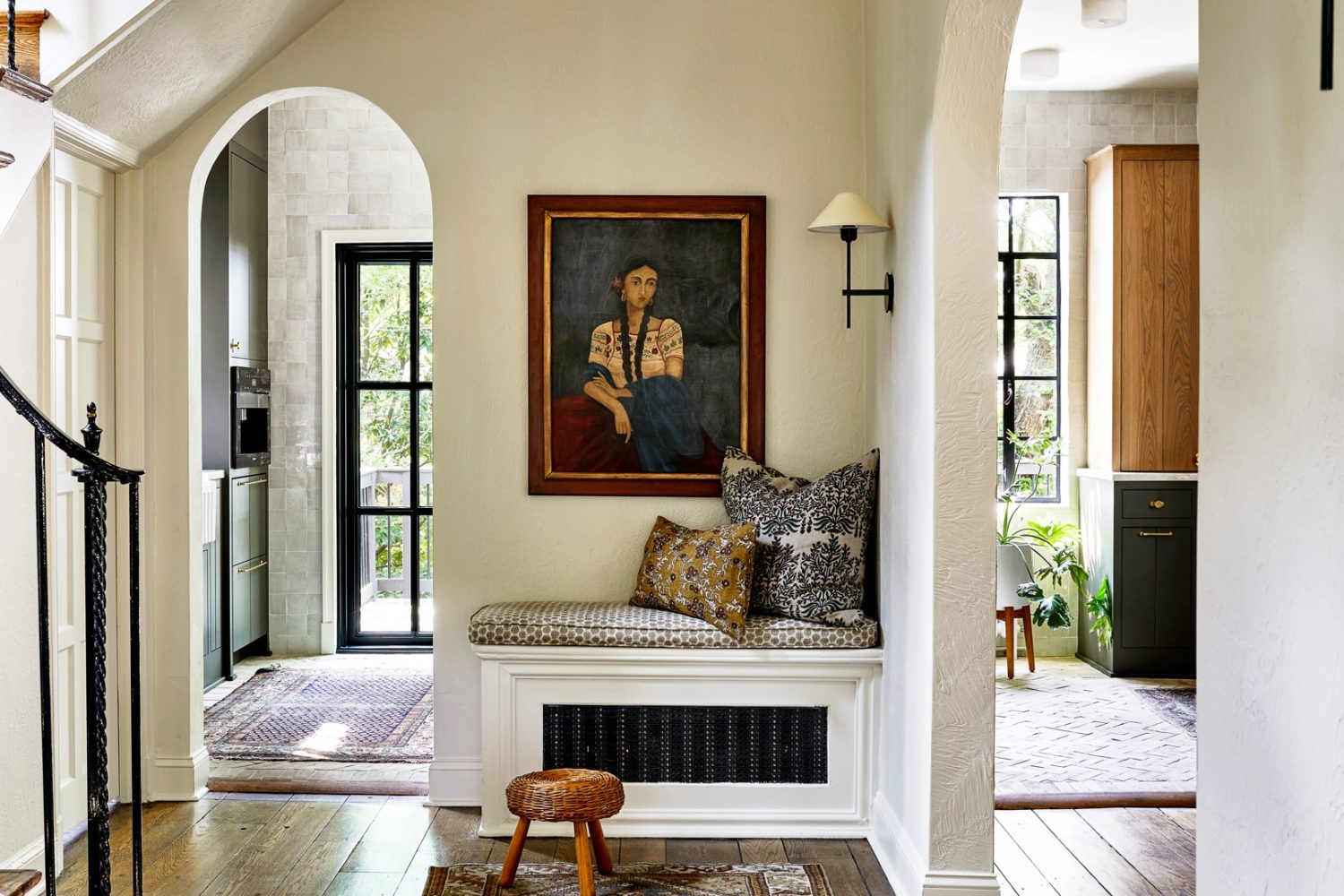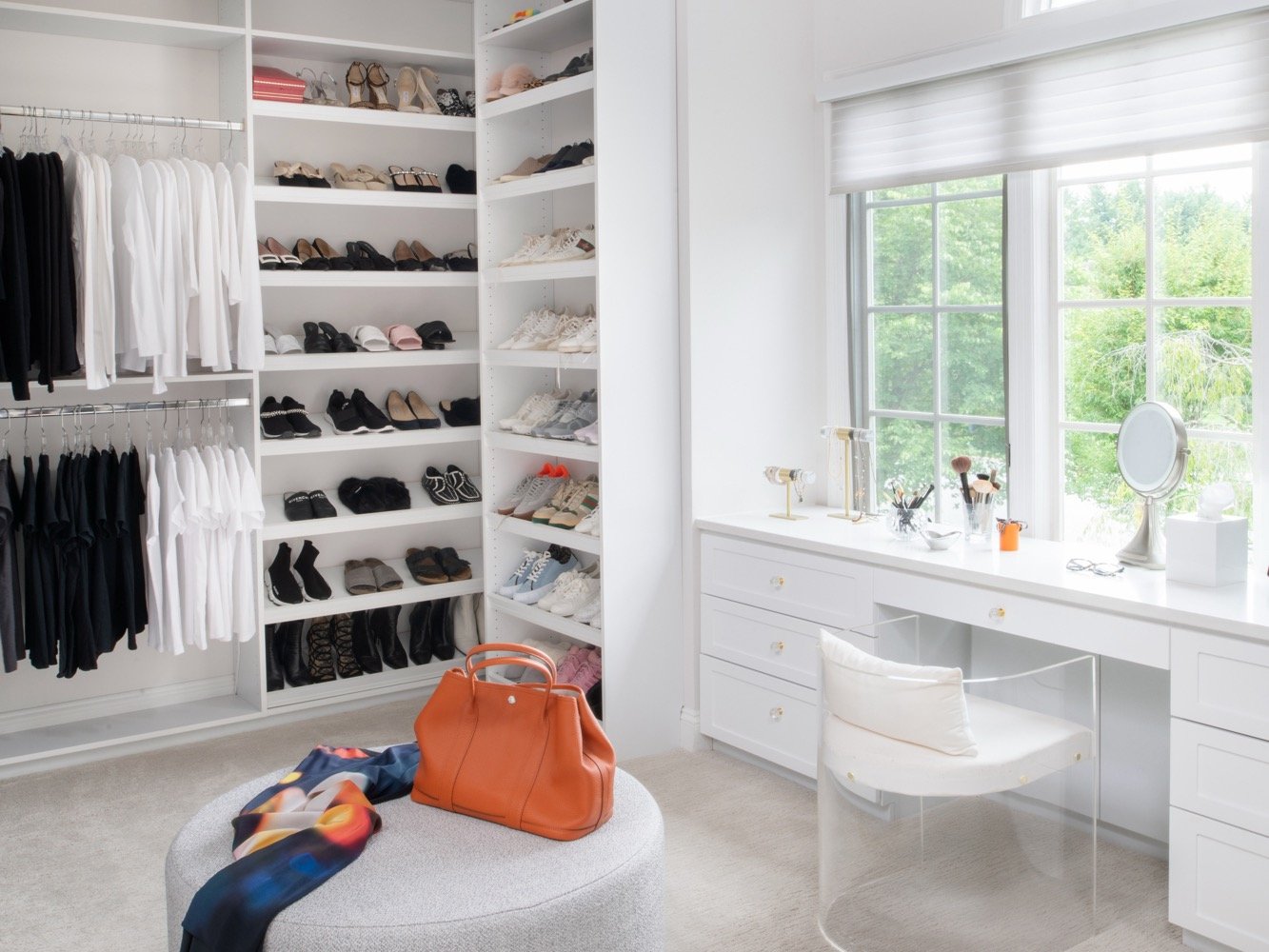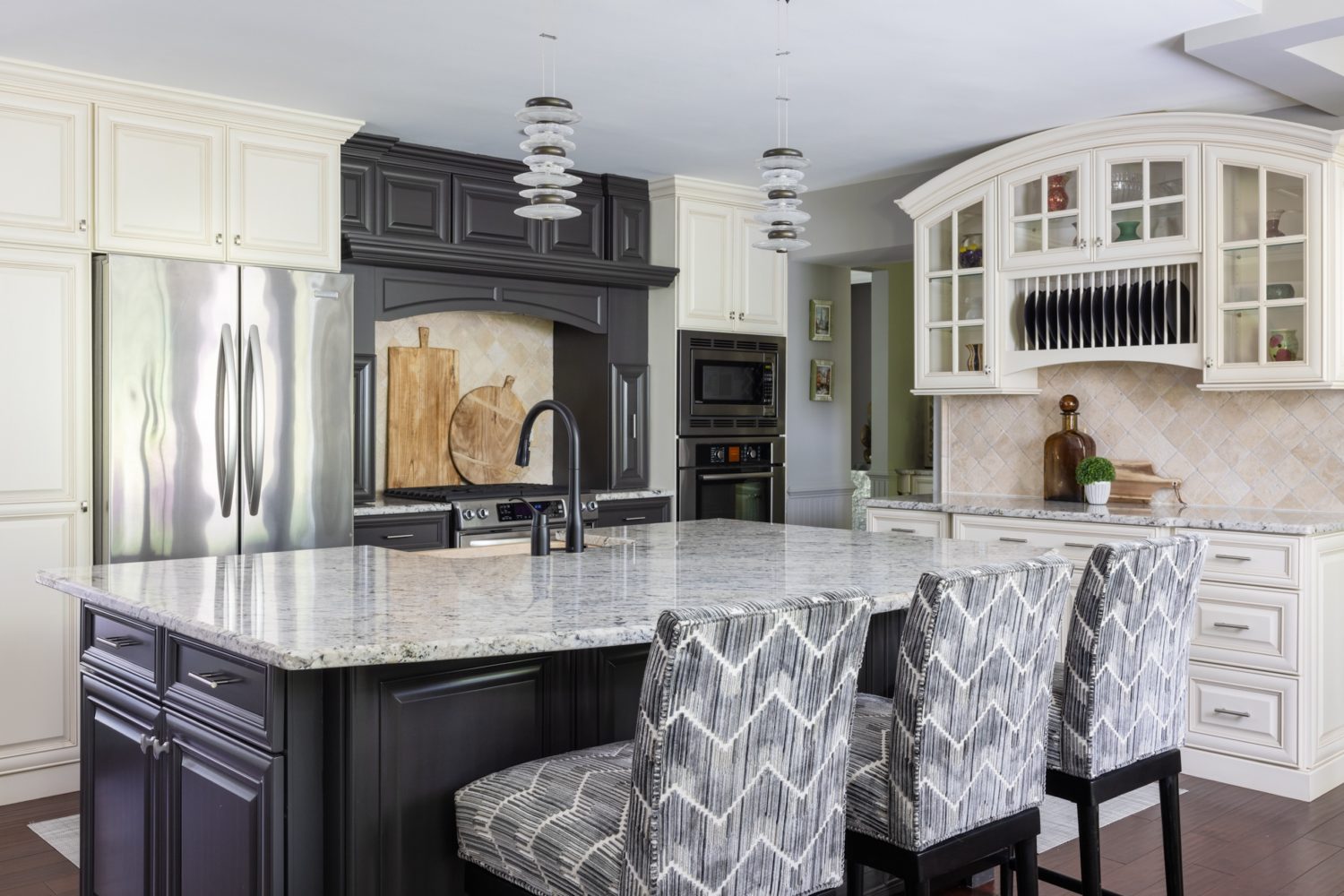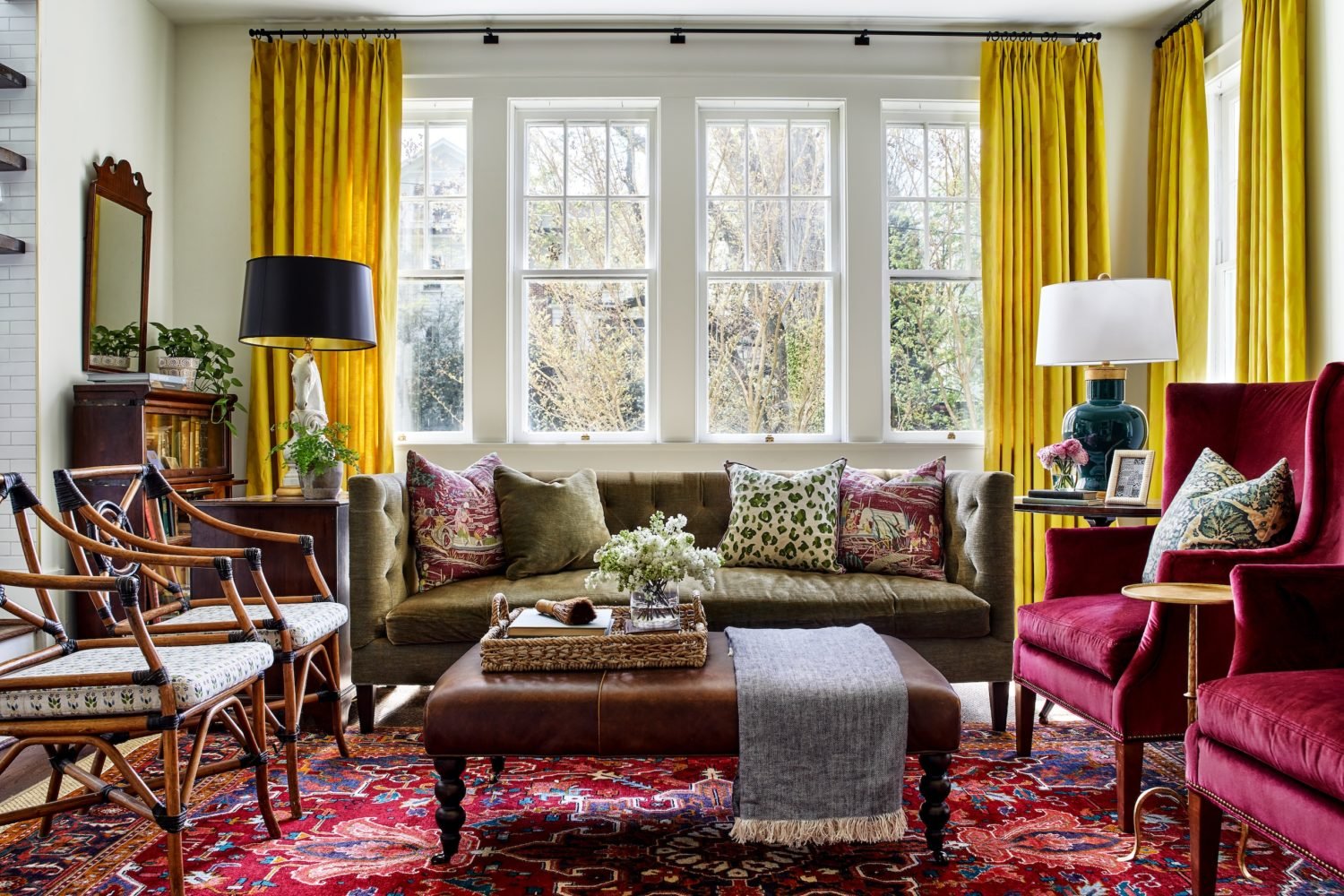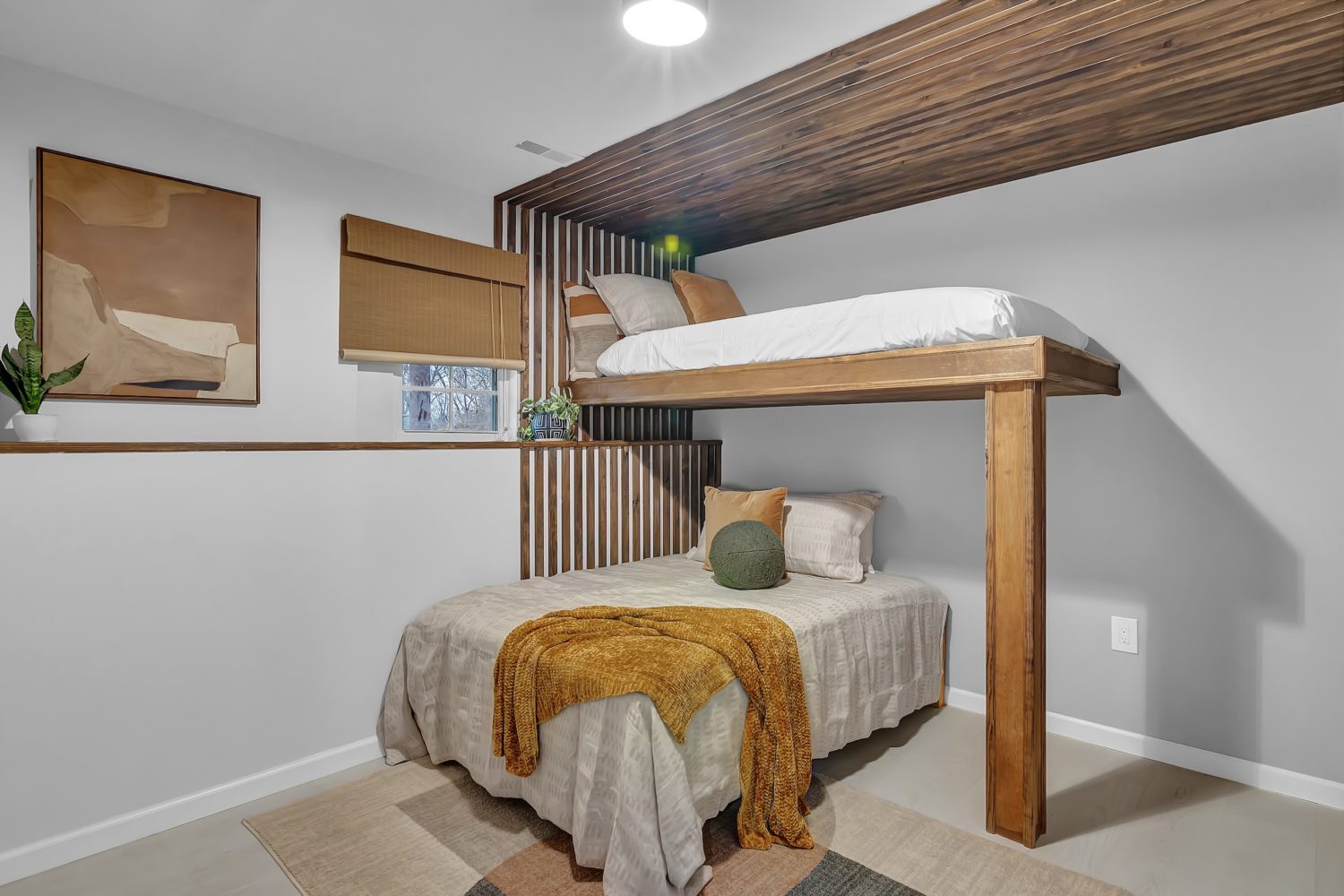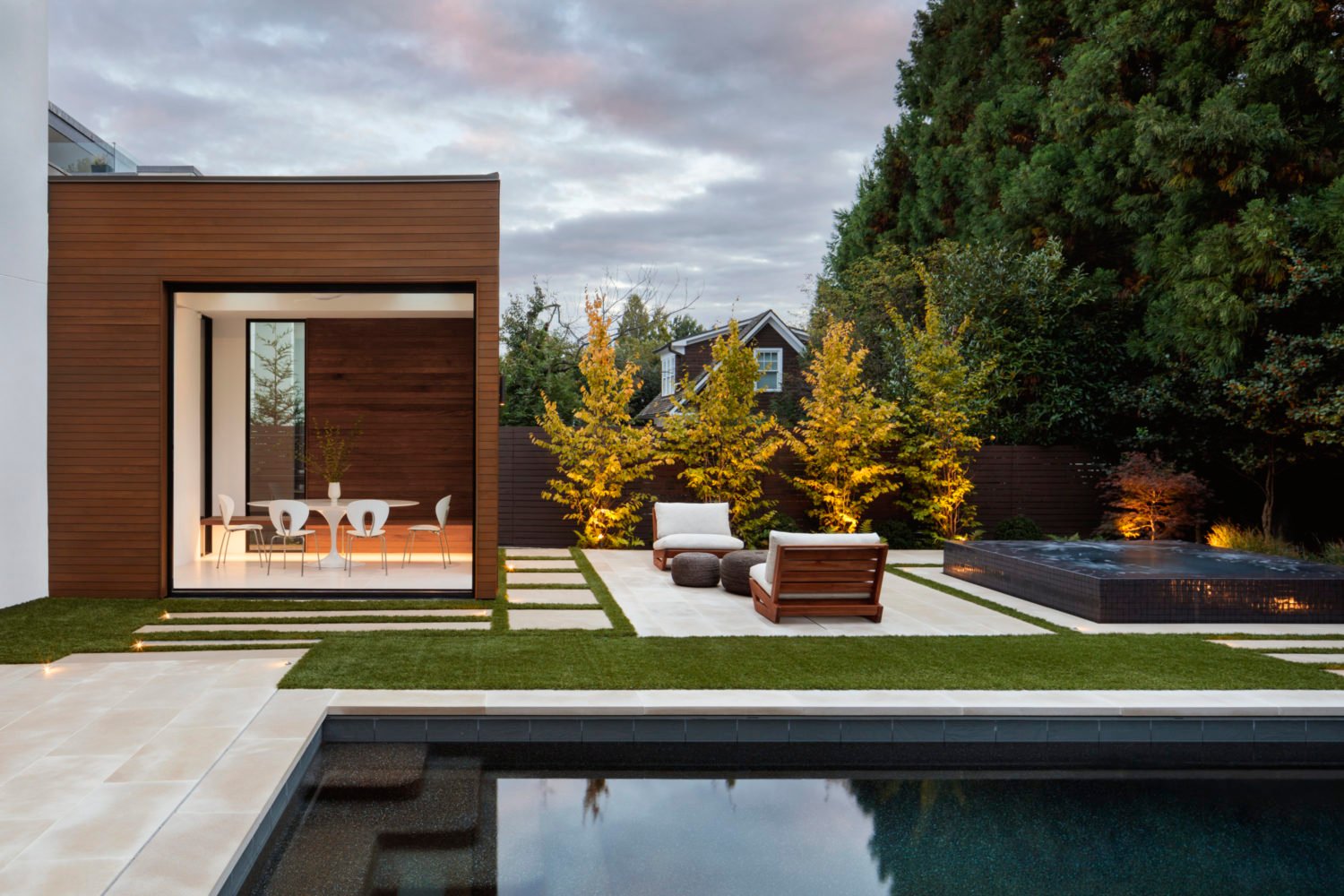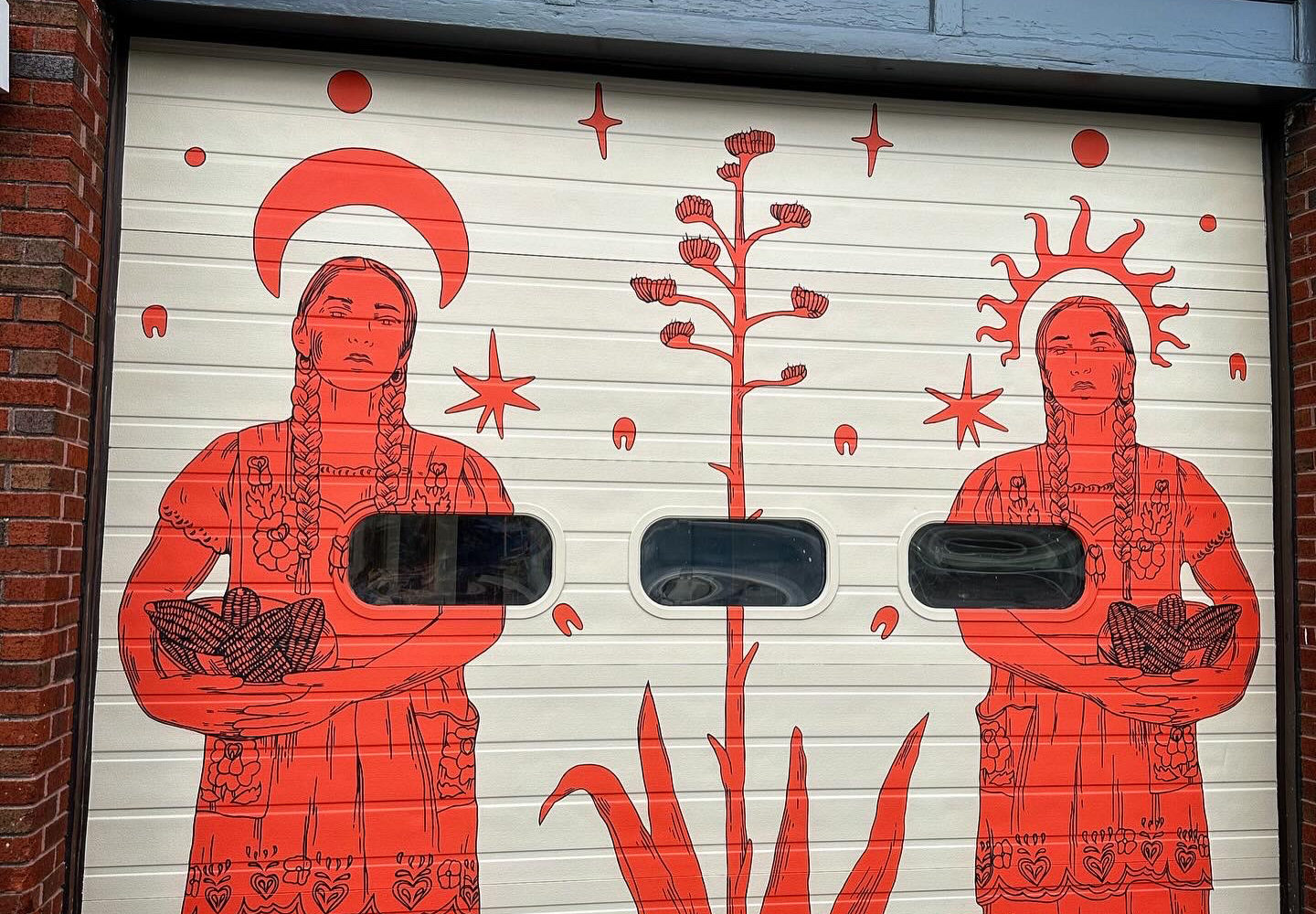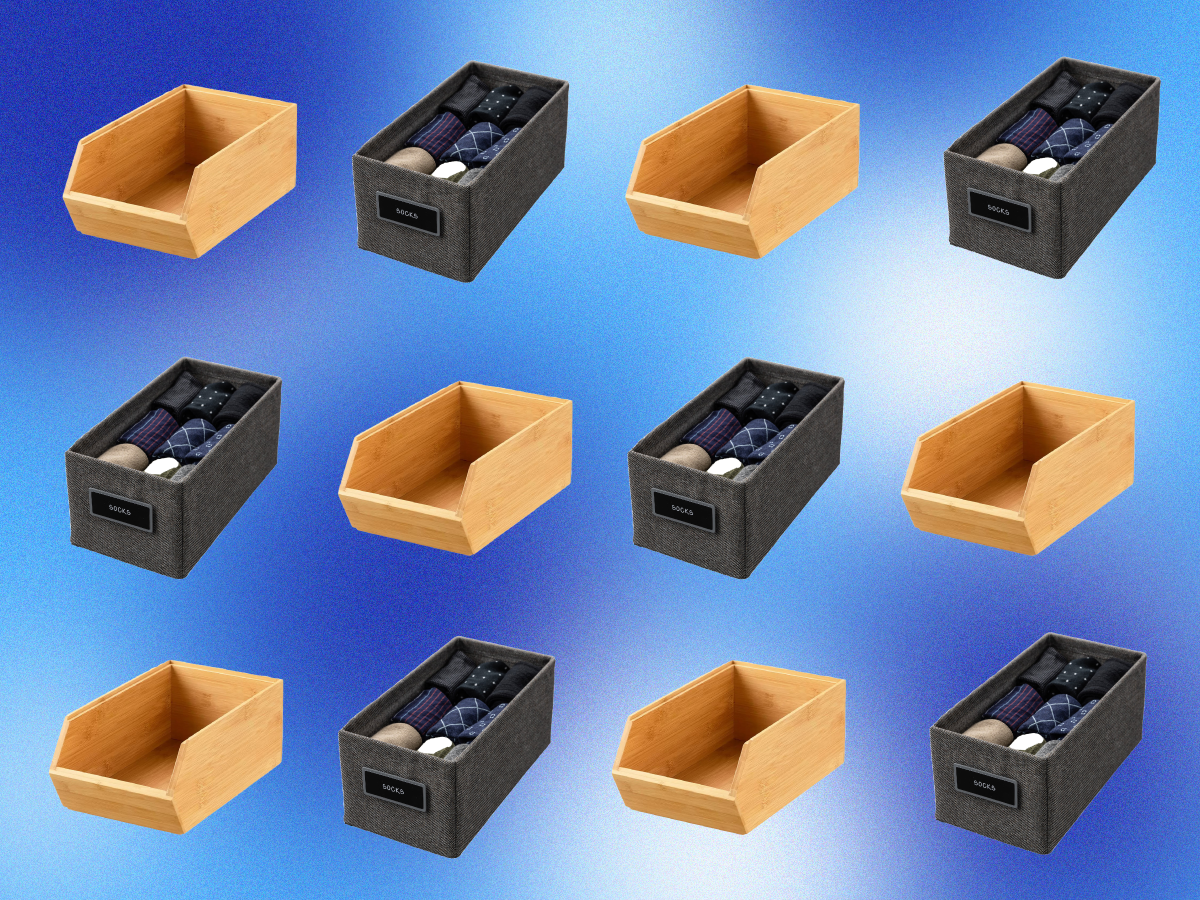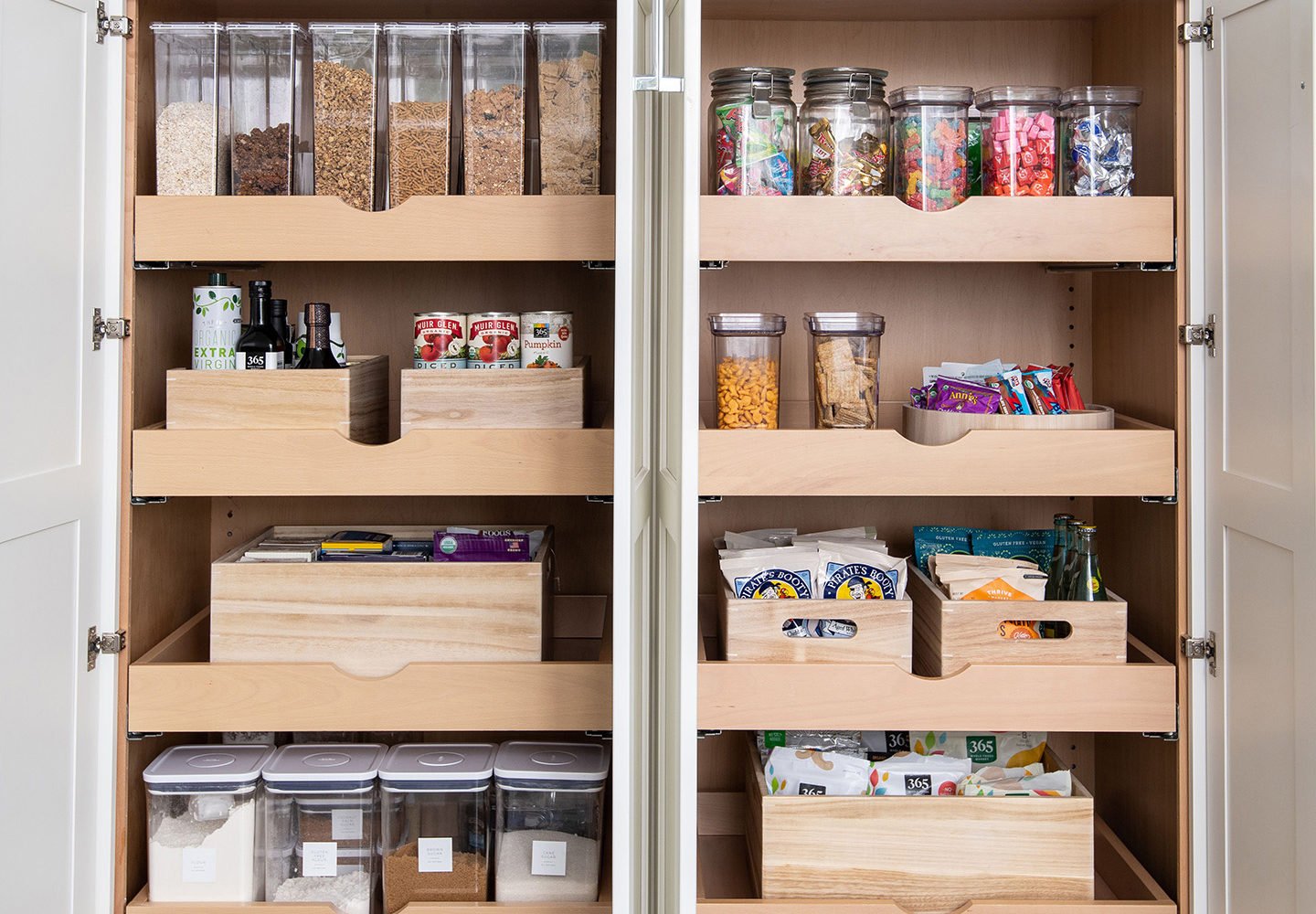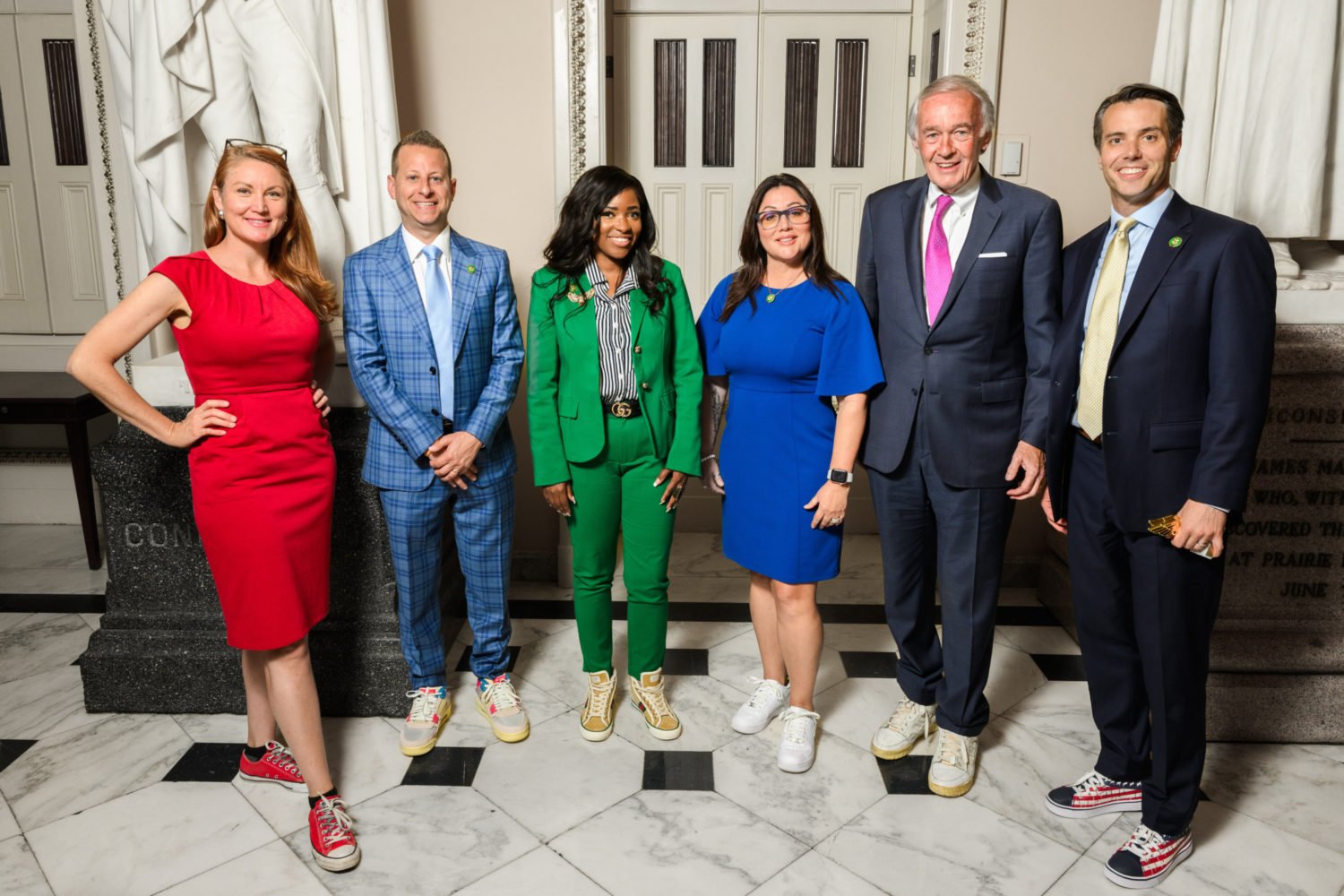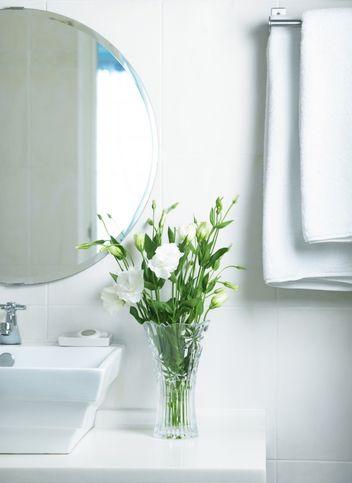
We asked Carolyn Thomas, bathroom designer at Jennifer Gilmer Kitchen & Bath in Bethesda, for remodeling advice. Thomas has a bachelor’s of interior design from the Rochester Institute of Technology and a master’s degree in interior design from the University of Maryland. Thomas is also a certified bath designer with the National Kitchen and Bath Association and has been at Gilmer’s firm since the late 1990s.
What trends are you seeing in bathroom renovations?
“People often renovate the bathroom once their kids are grown and out of the house. They want to create luxurious showers with an area for a bench where they can sit and bathe, especially as they get older, so hand showers are almost a necessity. Some showers have his and her ends, or one side will have a stationary shower head with body sprays. These days most people want clear frameless glass enclosures. A lot of people want larger bathrooms and bump into the master bedroom to make a master suite with large closets and more storage space.
“People are moving away from the traditional styles of the past and want things that are simpler. Tile is becoming incredibly textural; there are lots of varieties of mixed materials—slate and glass together, matte or highly polished finishes, flat beach pebbles. There isn’t a lot of variation in the color palette—smaller rooms look bigger with a monochromatic color scheme.”
What are common mistakes people make when renovating a bathroom?
“A lot of people don’t understand how the plumbing is connected. They think they can move the toilet across the room, but in most situations you can’t. You can do it for a tub or sink, but not the toilet. Sometimes, when people renovate themselves, they don’t understand how to coordinate all the elements: sink, toilet, faucets, and tile. Bathrooms should have an overall visual continuity.”
How long should someone expect a bathroom to be out of order when renovating?
“Per square foot, the bathroom is the most costly and time-consuming room to remodel. Electricians, plumbers, contractors, and tile-setters have to work on a rotating basis because bathrooms are usually small spaces. Two workers cannot be in there at the same time. I tell my customers to expect the bathroom to take six to eight weeks minimum.”
What is the most expensive bathroom you’ve designed?
“$125,000, just for the materials. An average, medium-sized bathroom will cost about $16,000 to $18,000 for materials. The total cost depends on the contractor; some can do plumbing and electrical work, which is less expensive, while some hire all the other tradesmen. You can expect to pay about the same amount for the contractor as for the materials.”
How do you feel about a heated floor? Is it worth the cost?
“I love them. More and more people are putting them in. It doesn’t heat the room, but it’s a wonderful thing. Any client that I’ve put one in for loves it. They run around $2,000 to $5,000, and you can get programmed ones that turn on at a certain time. When you wake up and walk into the bathroom, the floor is warm.”
Is there a bathroom you have designed that you are particularly proud of?
“I just did one that had originally been a bedroom. It was a very large mixed-use room—someone had put a washer and dryer in there. Out of that space, I put in a master bath with a tub and shower, a separate toilet compartment or water closet space, a walk-in closet, and a laundry room. I was trained as a commercial-space planner, so I love space-planning—it’s like putting puzzles together.”
What does your own bathroom look like?
“It is very simple, nothing extraordinary at all. Because I’m doing this all the time, I just wanted something simple. Also I know I can change it whenever I want!”

